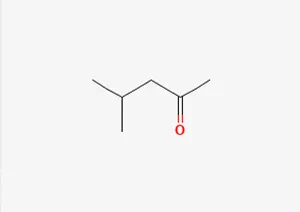All Categories



4-Methyl-2-Pentanone CAS 108-10-1, 4-Methyl-2-Pentanone, CAS 108-10-1
4-methyl-2-pentanone (CAS 108-10-1), as a multifunctional medium-boiling-point solvent, is irreplaceable in coatings, nuclear industry and pesticide synthesis. However, high attention should be paid to its flammability, explosiveness, carcinogenicity and environmental toxicity.
CAS : 108-10-1
Formula : C6H12O
Mol. wt. : 100.16
EINECS : 203-550-1
| CAS | 108-10-1 |
| Molecular formula | C6H12O |
| Molecular weight | 100.16 |
| EIENCS | 203-550-1 |
| Form | Liquid |
| Melting point | -80°C |
| boling point | 117-118 °C |
| Density | 0.801 g/mL at 25°C |
| Solubility | Slightly soluble in water (17-20 g/L, 20℃); It is readily soluble in organic solvents such as ethanol, ether and benzene |
| PKA | / |
| Color | APHA: ≤15 |
| Storage temp | / |
Chemical Name: 4-methyl-2-pentanone (Also known as methyl isobutyl ketone, MIBK, isohexanone)
Molecular formula: C₆H₁₂O
Molecular weight: 100.16 g/mol
CAS Number: 108-10-1
EINECS number: 203-550-1
Structural formula: CH₃COCH₂CH(CH₃)₂
4-methyl-2-pentanone (CAS 108-10-1), as a multifunctional medium-boiling-point solvent, is irreplaceable in coatings, nuclear industry and pesticide synthesis. However, high attention should be paid to its flammability, explosiveness, carcinogenicity and environmental toxicity.
Process optimization: One-step acetone method dominates industrial production, with a purity of over 99%
Safety core: Explosion-proof equipment (Ex mark), inert gas protection is required during operation, and the storage temperature should be ≤30℃
1. Industrial solvents (Core uses)
Coatings and resins: Solvents for nitrocellulose, vinyl resin, and rubber adhesives, enhancing the uniformity of paint films and drying speed.
Oil product treatment: Lubricating oil dewaxing agent, mineral processing agent (such as for separating tantalum/niobium, zirconium/hafnium).
Nuclear industry: Key extractant for the separation of uranium and plutonium.
2. Chemical synthesis
Pesticide intermediates: Synthetic rodenticide rodenpyl, insecticide tetracycline solvent.
Pharmaceuticals and fragrances: Drug carrier solvents (such as pyrethroids), rum and cheese flavoring formulation.
Polymer initiator: In peroxide form, it is used in the polymerization reaction of polyester resin.
3. Laboratory and Research
Chromatographic analysis: GC reference material, used for the separation of hydrophobic compounds such as fatty acids and waxes.
Extractant: Separation of plant extracts (such as alkaloids).
Health and environmental risks
Toxicity
Oral LD₅₀ in rats was 2080 mg/kg (low toxicity), but the vapor irritated the eyes and respiratory tract, and high concentrations caused central depression (nausea and vomiting).
Carcinogenicity: IARC classifies it as a Group 2B carcinogen (possibly carcinogenic to humans).
Environmental risk: Toxic to aquatic organisms (LC₅₀ goldfish 460 mg/L), leakage into water bodies must be prevented.
Operation and storage requirements
Protective measures
Gas masks (self-contained breathing apparatus is required when the ppm content is ≥50 ppm), chemical-resistant gloves (nitrile/fluororubber), and goggles.
Local exhaust system. Spark tools are prohibited.
Storage conditions
Cool and well-ventilated (≤30℃), sealed with inert gas (nitrogen), isolated from oxidants and acids.
Leakage treatment
After the sand and soil are adsorbed, they should be incinerated. It is strictly prohibited to wash them with water (they release heat when exposed to water).
* Prompt reply and 24 hours online, professional team to provide best price and high quality product.
* Sample testing support.
* Every batch of products will be tested to ensureits quality.
*The packing also can be according the customers` requirment.
*Any inquiries will be replied within 24 hours.
*we provide Commerical Invoice, Packing List, Bill of loading, COA , Health certificate and Origin certificate. If your markets have any special requirements, let us know.